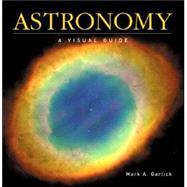
Mark A. Garlick, PhD, is a science writer, astronomical illustrator and a member of the International Association of Astronomical Artists. He is the author of The Story of the Solar System.
| Introduction | |
| Searching the Heavens | |
| Ever since humans first gathered in groups, people have searched the heavens | |
| Our ancestors looked to the skies for messages from the gods to guide them, celestial signs telling when to reap and sow | |
| And even today, thousands of years later, we retain a fascination with the sky, though for different reasons | |
| Astronomy through the ages | |
| Sky gods | |
| Archaeostronomy | |
| Scientific beginnings | |
| The development of astronomy tools | |
| Observatories | |
| Major space centers | |
| Space observatories | |
| Hubble Space Telescope | |
| Radio astronomy | |
| Infrared astronomy | |
| UV astronomy | |
| X-ray and gamma-ray astronomy | |
| The space race | |
| Mission milestones | |
| Space disasters | |
| Spacecraft | |
| Space stations | |
| A history of unmanned probes | |
| Solar and lunar probes | |
| Asteroid and comet probes | |
| Terrestrial planet probes | |
| Gas planet probes | |
| The Solar System | |
| The Solar System is our home in space, a prime piece of celestial real estate some 4600 million years old | |
| This is the planetary system that contains the Sun, the nine known planets | |
| Earth among them- and countless small but equally interesting chunks of debris called comets and asteroids | |
| Formation of the Solar System | |
| The modern Solar System | |
| Future of the Solar System | |
| The planets | |
| Mercury | |
| Venus | |
| Earth | |
| Mars | |
| Jupiter | |
| Saturn | |
| Uranus | |
| Neptune | |
| Pluto | |
| The Sun | |
| The Moon | |
| Solar eclipses | |
| Lunar eclipses | |
| Meteors and meteorites | |
| Asteroids | |
| Comets | |
| Beyond Pluto | |
| Stars, Galaxies and Celestial Light | |
| Beyond the Solar System, things take on an extremely new scale | |
| Stars are strewn across the Milky Way | |
| Galaxy like grains of sand many miles apart | |
| They share their home with a whole host of celestial lights called nebulae | |
| And then, beyond our own galaxy, there are hundreds of billions of others | |
| Celestial clouds | |
| What is a star? | |
| Lifecycle of a star | |
| Binaries, multiples and variables | |
| Star clusters | |
| Star death: planetary nebulae | |
| Star death: supernovae | |
| Star death: black wholes | |
| Galaxy classification | |
| Spiral galaxies | |
| Elliptical galaxies | |
| Lenticular galaxies | |
| Irregular galaxies | |
| Active and radio galaxies | |
| Quasars | |
| Galaxy clusters | |
| Galaxy birth | |
| Galaxy evolution | |
| The Night Sky | |
| The night sky is more than just the Moon and a few dozen constellations of stars | |
| Planets, nebulae, clusters of stars and even a few galaxies are all visible with the unaided eye | |
| And with modest equipment such as a pair of binoculars or a small telescope, the celestial dome takes on a whole new dimension | |
| Understanding the night sky | |
| Mapping the heavens | |
| The spinning Earth | |
| Constellations and the zodiac | |
| Beginning astronomy | |
| Choosing and using binoculars | |
| Choosing and using telescopes | |
| Reading the star maps | |
| Whole sky overview | |
| Monthly stars of the northern skies | |
| Monthly stars of the southern skies | |
| The Universe | |
| Our understanding of the Universe today is very different from what it was just 10 years ago | |
| The very fabric of space and time is now seen as inextricably interwoven with a mysterious "dark energy" about which we know next to nothing | |
| And this is just one example of the many unknowns that astronomers struggle with daily | |
| Formation of the Universe | |
| Evidence for the Big Bang | |
| Our place in the Universe | |
| Life in the Universe | |
| Gamma ray bursters | |
| Wormholes | |
| Dark matter | |
| Dark energy | |
| Future of the Universe | |
| Factfile | |
| Glossary | |
| Index | |
| Table of Contents provided by Publisher. All Rights Reserved. |
The New copy of this book will include any supplemental materials advertised. Please check the title of the book to determine if it should include any access cards, study guides, lab manuals, CDs, etc.
The Used, Rental and eBook copies of this book are not guaranteed to include any supplemental materials. Typically, only the book itself is included. This is true even if the title states it includes any access cards, study guides, lab manuals, CDs, etc.